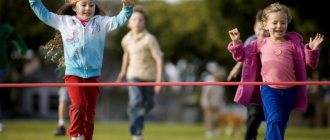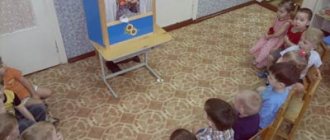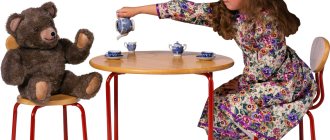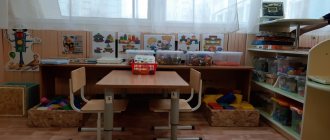- What is robotics?
- What are the benefits of robotics for children?
- When to start training and where to teach?
- Which designers to choose?
- The difference between robotics for children and professional adults
- Robots created by schoolchildren
- What professions involve robotics?
The science of robots (robotics) is becoming increasingly popular in our lives: special robots study outer space, manipulative arms are used in factories, flying drones help operators and correspondents, modern “smart” prostheses improve the lives of people with impaired health, and robotic vacuum cleaners and window washers make the work of housewives easier.
In our century, the opportunity to study and engage in robotics has appeared not only for scientists, but also for children! We will tell you in detail about what robotics is, what its benefits are for children, and at what age a child can be introduced to classes.
What is robotics?
Robotics is a science that studies the design and use of automated technological systems, or simply robots. There is an opportunity for children to study robotics in schools and in additional education sections. Robots are created using special constructors. Children are easily involved in this process, because creating a robot on their own, and most importantly, getting the result, is extremely interesting.
A big plus is also the nuance that the classes combine both knowledge and entertainment, and therefore are becoming increasingly in demand among children and their parents.
If your child shows a sincere interest in technology, pay attention to robotics; in the process of studying, he will learn many useful skills, become more independent, active and believe in himself.
MAGAZINE Preschooler.RF
The importance of design in the formation of the personality of a preschool childDesign is a purposeful process that results in a specific real product. Children's construction is closely related to play and is an activity that meets the interests of children.
Construction opens up great opportunities for shaping the comprehensive development of children and their creativity.
Construction is an important means of mental education for children. In the system of mental education, a large role belongs to the formation of the child’s sensory abilities. Sensory abilities develop most successfully in productive activities, in particular in construction. Here, sensory processes are carried out not in isolation from activity, but in it itself, revealing rich opportunities for sensory education.
Mastering construction helps expand the vocabulary and enrich children's speech, since in the process of work children share their ideas, learn to motivate them by communicating with each other, give a verbal report on the actions performed, etc. The child learns the necessary words in connection with the needs of other activities, which contributes to the formation of the correct meaning of words and ways of using them.
When constructing, the child’s visual perception of objects in the surrounding world is improved. It becomes more focused. A prerequisite is also created for acquiring the ability, already at preschool age, to carry out a deeper visual analysis of a model and an object, without resorting to real dismemberment. Thus, the ability to compare and perform visual analysis is formed, including thinking processes in the process of perception.
Sensory education aims to develop spatial concepts, and design plays a large role in this. When constructing a structure (building), the child clarifies and expands his ideas, first outlining its position in space and the location of its parts. These ideas are also improved when he creates a toy, placing and gluing small parts (decorations on the walls of a basket, windows near a house, etc.) on a flat pattern (pattern); Before folding and gluing the pattern into a finished three-dimensional toy, the structures are placed on a certain plane ( “on the street” , “on the farm”, etc.). Thus, the formation of spatial representations in the design process occurs on visual material.
In the process of constructive activity, children form generalized ideas. These generalizations arise on the basis of ideas obtained from direct perception of various structures and the creation of their own buildings. Children learn that many objects in the environment make up groups of homogeneous objects, united by one concept: buildings, bridges, transport, etc. In each group, objects have both common and different characteristics.
The formation of this kind of ideas contributes to children’s assimilation of the main constructive dependence - the dependence of the design on its practical purpose, which has a significant impact on the development of children’s thinking.
In the process of teaching children to construct different designs of homogeneous buildings or toys (a residential building, a school, a kindergarten; a box, a house, a basket), conditions are created for the development of creative design skills. The child assimilates, as it were, a scheme for making a building or a toy, transmitting both common and different characteristics into them, and carries out this in a certain sequence. This nature of the activity is the basis for allowing children to look for a way to independently produce a new version of an object, which is often required in the game.
Design is also an effective means of aesthetic education. By introducing children on excursions to some structures and buildings (residential buildings, buildings, kindergartens, schools, theaters), as well as architectural monuments accessible to their understanding (Moscow Kremlin, Bolshoi Theater, etc.), the teacher has the opportunity to develop the artistic taste of children, causing they have aesthetic pleasure when looking at beautiful buildings. To develop the ability to appreciate what people have created through creative work, to love the architectural riches of their city, country, and to take care of them.
Purposeful and systematic teaching of design to children plays a big role in preparing children for school. It contributes to the development of children’s ability to learn, reveals to them that the main meaning of activity is not only in obtaining results, but also in acquiring knowledge and skills. Such a cognitive motive causes significant changes in mental processes. These changes consist mainly in the ability to voluntarily control one’s cognitive processes (direct them to solve educational problems), to achieve a certain level of development of mental operations, and the ability to systematically perform mental work necessary for the conscious assimilation of knowledge.
| Next > |
What are the benefits of robotics for children?
The benefits of this science are undeniable!
By constructing robots, your child:
1. DEVELOP:
- responsibility;
- discipline;
- creative thinking;
- imagination;
- speech and mental abilities;
- attentiveness;
- patience;
- determination;
- perseverance;
- memory;
- fine motor skills of the hands.
2. WILL LEARN:
- work in a team;
- act step by step from simple to complex;
- good spatial orientation;
- make decisions independently;
- respect other people's work;
- bring the work started to its logical conclusion.
3. MASTER:
- basics of computer literacy;
- fundamentals of mathematics and physics;
- working with mechanisms;
- design and construction;
- diversity of the surrounding world;
- communication skills with teachers and peers;
- English (after all, most programs and educational texts are presented in English).
Children who have attended robotics classes from an early age will in the future much more easily master such serious disciplines as programming, physics, and engineering. The reason for this is that the simplest construction in childhood gives an understanding of how the particular relates to the whole, how to assemble a working product from small particles. In the future, such an intuitive skill will serve a person well.
We create with our hands or the benefits of design in a child’s development
(4-5 years)
Design is a practical activity aimed at obtaining a pre-designed product. Children's construction is closely related to play.
Designing from paper, cardboard, natural materials, various types of construction sets in kindergarten meets the interests and needs of children, and at the same time has ample opportunities for mental and aesthetic development.
Along with technical skills, the ability to analyze objects in the surrounding reality develops (disassemble them into parts, name them, and then reassemble them into a building).
Secondly, a generalized idea of buildings and engineering structures is formed. Children learn to group surrounding objects: buildings, bridges, vehicles, furniture. There are similarities and differences in each group. Common is the presence of identical parts (foundation, walls, roof). The shape, size, and purpose may be different.
Thirdly, independence of thinking develops. Children examine objects and buildings, mastering the construction scheme, learn to plan their actions, make volitional efforts to achieve results, and evaluate them.
While constructing, the child correctly learns the names of construction kit parts, three-dimensional geometric shapes, and recognizes the features of geometric bodies (all sides of a cube are equal).
Construction improves children's speech; while playing, they share their ideas, unite in groups, distribute responsibilities for creating a building, and learn to designate spatial concepts (left, tall).
Construction in classes and games develops personal qualities.
Festive crafts for the holidays, gifts for kids and loved ones, decorations for the group. When organizing collective construction, children learn to negotiate, distribute the load, and provide mutual assistance. During such classes, arbitrariness of behavior and understanding of the significance of events develop.
Construction will help your child develop artistic taste, fine motor skills, and attentiveness. By examining architectural structures, children learn to identify means of expression and try to repeat them in their own creativity.
Creating crafts from natural materials and collecting them in nature promotes a special relationship with the surrounding nature, the ability to see the beauty of color and shape.
There is another type of design - origami. In the second half of the middle group, children are able to make simple origami models. Through repeated folding, children learn the properties of paper, develop abstract thinking, and improve visual-spatial perception. Thus, they master the skills of cultural work, which is important for preparing for successful schooling.
Planes, boats, turntables are toys with which children occupy themselves, invent games, and take care of their work.
Prepared by teacher Vasyukova O.E.
When to start training and where to teach?
Childhood is the best time to participate in robotics clubs. Psychologists say the most appropriate age is 4 years, because four-year-olds already understand abstraction and are able to create algorithms and design a diagram, no matter how unrealistic it may sound. You can introduce your child to robotics both in special clubs and at home by buying construction sets with mechanical parts. If you sent your child to a section, you need to start learning the basics of mathematics at the same time, otherwise it will be difficult for your child.
At the age of 10, children can already learn programming; at this age, children begin to understand the structure of data storage and more complex algorithms. For such children, the study of machine theory and robot design is already available in additional education.
Education must be effective and take place under the constant supervision of a competent teacher with good professional training, who can take into account both the age and mental abilities of each child. You need to understand that robotics gives children the opportunity to expand the space for the development of their creative and cognitive activity, to realize their best qualities and abilities, and to become a possible start in their future adult professional activities. All these facts impose a certain responsibility and possession of mandatory knowledge on the profession of a robotics teacher.
Therefore, we recommend that teachers and parents master our distance learning program in the field of teaching robotics. The course provides a real opportunity to perform the duties of a robotics teacher at a high level and, at the end of the training, to acquire skills in planning and implementing classes in the field of additional education.
Article:
Constructive activity is a practical activity aimed at obtaining a specific, pre-conceived real product that corresponds to its functional purpose.
Design has extremely wide possibilities for mental, moral, aesthetic, and labor education. Children's construction is usually understood as a variety of buildings made from building materials, the production of crafts and toys from paper, cardboard, wood and other materials. In its nature, it is most similar to visual activity and play - it also reflects the surrounding reality. Children's buildings and crafts are for practical use (buildings for play, crafts for decorating a Christmas tree, for a gift for mom, etc.), and therefore must correspond to their purpose.
There are two types of children's design: technical and artistic.
In technical design, children mainly display real-life objects, and also come up with designs by association with images from fairy tales and films. At the same time, they model their main structural and functional features: a building with a roof, windows, a door; a ship with a deck, stern, steering wheel, etc.
The technical type of design activity includes: design from building material (wooden painted or unpainted parts of geometric shape); from designer parts with different fastening methods; from large-sized modular blocks.
In artistic design, children, when creating images, not only (and not so much) display their structure, but express their attitude towards them, convey their character, using such a technique as “violation” of proportions, as well as color, texture, shape: a cheerful clown , a thin simpleton wolf, a handsome prince, etc., which leads, in the words of A.V. Zaporozhets, to “the formation of unique emotional images.”
The artistic type of design includes design from paper and from natural materials.
Construction is a productive activity that meets the interests and needs of preschoolers. Children use the created buildings and crafts in games, in theatrical activities, and also as gifts, decoration of premises, grounds, etc., which brings them great satisfaction.
Children's design, and especially technical, is closely related to play activities. Children build buildings (car garage, knight's castle, etc.) and play with them, repeatedly rebuilding them during the game.
Taking into account the features of play and design, their relationship is necessary when determining the forms and methods of organizing these different types of children's activities. Thus, the requirements for the quality of structures erected even by older children during role-play are unjustified, since this can destroy it. And vice versa, to be content with primitive children's buildings and crafts and not to purposefully develop full-fledged construction as an activity means to significantly impoverish the development of children.
Construction classes develop children's sensory and thinking abilities.
According to T.V. Luss, with properly organized activities, children acquire:
- constructive and technical skills:
- construct individual objects from building materials - buildings, bridges, etc.;
- make various crafts from paper - Christmas tree decorations, boats, etc.;
- generalized skills:
- purposefully look at objects
- compare them with each other and divide them into parts,
- see the common and different in them,
- find the main structural parts on which the location of other parts depends,
- make inferences and generalizations.
It is important that children’s thinking in the process of constructive activity has a practical orientation and is of a creative nature. When teaching children to design, planning mental activity develops, which is an important factor in the formation of educational activity. When children design a building or craft, they mentally imagine what they will be like and plan in advance how they will be completed and in what sequence.
According to L. A Paramonova, constructive activity contributes to practical knowledge of the properties of geometric bodies and spatial relationships:
- children’s speech is enriched with new terms and concepts (bar, cube, pyramid, etc.), which are rarely used in other types of activities;
- children practice the correct use of concepts (tall - low, long - short, wide - narrow, large - small), in precise verbal indication of direction (above - below, right - left, down - up, behind - in front, closer, etc.). d.).
Constructive activity is also a means of moral education of preschool children. According to L.A. Wenger, in the process of this activity important personality qualities are formed:
- hard work,
- independence,
- initiative,
- perseverance in achieving goals,
- organization.
Joint constructive activities of children (collective buildings, crafts) play a big role in developing the initial skills of working in a team:
- the ability to negotiate in advance (distribute responsibilities, select the material necessary to complete a building or craft, plan the process of their manufacture, etc.);
- work together without interfering with each other.
However, constructive activity acquires such a multifaceted significance in raising children only if systematic training is carried out and a variety of methods are used aimed at developing not only constructive skills, but also valuable qualities of the child’s personality and mental abilities.
Which designers to choose?
Designers for classes are selected in accordance with the educational program and the age of the child. They can be either domestic or foreign made. For preschoolers, everyone's favorite Lego is recommended - it is easy to assemble, it contains parts in bright colors, which causes sincere delight in the smallest designers.
The Fischertechnik kit is also suitable for younger schoolchildren and beginners - its plus is the presence of real wires and plugs that create the feeling of adult programming.
At the age of fourteen, teenagers prefer more complex models that require programming skills. This is TRIC or Raspberry.
Fraza.ua - the author's view of life
A construction set is a universal educational toy that effectively influences a child’s thinking and creative abilities. Let’s find out from the experts of the online store “Budinok Igrashok” how construction is useful for a child’s development.
The uniqueness of the designer is that it is a complex toy that simultaneously stimulates the intellectual, psychophysiological and emotional development of the child and instills in him the necessary skills. The benefits of a passion for construction affect multiple aspects of the personality and are long-lasting. It has been proven that a child's passion for construction toys affects future success in school and in adult life.
Logic and math skills
Numerous studies by American and Dutch scientists have revealed a direct connection between a love of construction toys and success in mathematics. It turned out that the better a child copes with construction, the better he masters counting and solves mathematical problems. The fact is that during modeling, kids have to rely on basic logical techniques (analysis, synthesis, comparison, generalization, etc.), which develops thinking, logic and intelligence - what is necessary for the successful mastery of mathematics and other exact sciences .
Imagination and spatial thinking
By constructing from cubes and other elements, children think through the composition and learn to see objects three-dimensionally. This develops spatial thinking, which in turn helps to master geometry, drawing and various types of visual art. Having learned to navigate in three-dimensional space, kids gradually move away from the instructions, turn on their imagination and imagination, and begin to model their own worlds. Thus, they learn to think outside the box and approach the process creatively. This is how creativity is born in a child.
Patience and self-discipline
Assembling models, especially complex ones, takes time, so construction instills in children perseverance and patience. Focusing on results requires self-discipline. Children become calmer, more purposeful and independent, learning to cope with tasks on their own, which in the future helps them find a way out of life’s difficulties.
Fine motor skills and speech
Block, screw, and magnetic constructors require the child to interact with small parts. To connect the elements of a modeled object with each other, children have to perform precise actions with their hands and fingers. This develops fine manual motor skills, which is especially important at an early age, when movements are still poorly coordinated and the fingers are reluctant to obey the little owner. In addition, the centers that control manual motor skills and speech are located nearby in the brain, therefore, by developing hands, the child simultaneously stimulates speaking skills. His speech becomes clearer and more correct. It is no coincidence that construction toys are used in the treatment of speech disorders and autism.
Knowledge of the world and socialization
Typically, children assemble familiar objects from construction kit parts: buildings, vehicles, animals, etc. This helps to update knowledge about the world around them and deepens their understanding of reality. If at the same time the kids work in a team, they get to know each other better, establish friendly connections, help and support their comrades in working for a common result. The communication skills developed in this way in the future help children to socialize in any group.
Child psychologists say that the best toy is one that can change in unpredictable ways. In this sense, there is little that can compete with the designer. It was originally conceived as going beyond the template. A construction set cannot replace all the toys a child has, but with the right approach, it can be used to harmonize and positively influence child development.
Open up a wonderful world of fantasy and design for your child.
Read the Phrase on Google News (click “Subscribe”)
Subscribe to Fraza channels on Telegram, Youtube, Twitter, Instagram, Facebook
The difference between robotics for children and professional adults
Children's robotics aims to teach children the discipline itself, and experienced specialists solve specific “adult” problems.
Kids begin lessons with the simplest actions: they understand the motors, make the robot move and turn. Accomplished professionals are engaged in the creation of serious technical systems.
But we all understand that without children’s robotics there will be no adult robotics; without a child’s interest in creating robots, there will be no professional success for an adult.
Development of constructive abilities of preschool children
Author: Kuzmenko Svetlana Vladimirovna
The relevance of the topic is due to the need to prepare children for life from preschool age, since we live in an age of unprecedented scientific and technological revolution. And life in all its directions becomes more diverse and complex, the further it goes, the more it requires from a person not stereotyped, habitual actions, but mobility of mind, thinking, quick orientation, and a creative approach to solving large and small problems. Construction is closely related to play and is an activity that meets the interests of children, through which their mental and creative abilities can be improved. In the process of targeted learning, preschoolers, along with technical skills, develop the ability to analyze objects in the surrounding reality, form generalized ideas about the objects being created, develop independent thinking, and form valuable personality traits (accuracy, determination, perseverance in achieving goals). All this allows us to consider construction as an effective means of preparing children for school.
The purpose of this work is to show the need to develop the constructive abilities of preschoolers as a factor in readiness for school learning; to form children's sensory abilities; develop thinking, attention, imagination, creativity, artistic taste; cultivate dedication, accuracy, and perseverance in achieving goals.
Objectives: to develop a child’s interest in creative design in preschool age through play activities; teach children observation skills and the ability to compare; introduction to the world of beauty.
The term “construction” (from the Latin word construere - construction) means construction in general, bringing various objects, parts, elements into a certain relative position. Children's construction is usually understood as a variety of buildings made from building materials, the production of crafts and toys from paper, cardboard, wood and other materials. In its nature, it is most similar to visual activity and play - it also reflects the surrounding reality. Children's buildings and crafts are for practical use, and therefore must correspond to their purpose.
Constructive activity is a practical activity aimed at obtaining a specific, pre-conceived product that corresponds to its functional purpose. Children's constructive creativity can develop successfully if they have clear ideas about structures that clearly reflect the spatial characteristics of objects and their relationships. Such ideas are formed in conditions of the child’s active cognition of the environment and deepen in the process of representation. The basis of children's ideas is the analysis and synthesis of objects and buildings.
Thus, the prerequisites for the formation of children’s constructive creativity are: ideas about the objects of reality and the ability to highlight their spatial properties and relationships; childhood experience, including a variety of constructive skills and abilities to create different versions of the same object. Depending on the material from which children create their buildings and structures, they distinguish:
ü design from building materials;
ü construction from paper, cardboard, boxes, reels and other materials;
ü construction from natural materials.
Children begin constructing Lego-type construction materials from building materials and large parts in the middle group. At this age, buildings may include 5-6 parts. Design skills according to one’s own design are developed, as well as planning a sequence of actions. At this age, children develop an interest in the quality of their work: they begin to consciously strive to comply with certain requirements imposed by the teacher (the sequence of operations, the use of different design methods, they show a desire to master certain skills and willingly practice design. In the middle of the year, children begin construct from paper, and at the end of the year - from natural and waste materials.
In the older group, construction is characterized by children’s ability to analyze the conditions in which this activity takes place. Children use and name various parts of the wooden construction set. In the older group, during design classes, children can make objects necessary for the game from paper and other materials. From natural materials - cones, acorns, leaves, branches, berries - children learn to construct animals that are simple in structure. The main techniques that help children create images are observations, looking at animals and birds on a walk, in illustrations. When teaching how to design an object, you should not constantly resort to showing methods of construction - it is necessary to intensify the experience of children, ask how, in their opinion, this thing can be done, ask leading questions, and praise those who answer correctly. This technique promotes the development of children's creativity.
In the preparatory group, children have already mastered a fairly wide range of knowledge, skills and abilities in creating various buildings, children are able to construct more complex structures, which require various construction sets.
Children continue to learn not only from building material, but also from paper and other materials. These classes are of great importance for preparing for school: imaginative thinking develops during the design process. Design abilities.
Children should develop the ability to use buildings made from building materials in role-playing games, develop the ability to independently make toys for role-playing games (binoculars, hats, books, toy furniture, etc.); souvenirs for parents and kindergarten staff; Christmas tree decorations.
Most children simply love to design, so a construction set is something that should be in every home.
And the benefits of such an acquisition are obvious - on the one hand, the child is captivated by an interesting activity, and on the other, this activity contributes to all-round development. comments powered by HyperComments
Robots created by schoolchildren
As an example of the benefits of robotics classes, we will talk about gifted schoolchildren and the inventions that they managed to create.
- Novorossian Mikhail Vulf, when he was in 10th grade, invented a robot to save drowning people. His project consisted of two components: a catamaran with an attached net and a manipulator capable of pulling a drowning person out of the water.
- Fedor Noskov, a high school student from the city of Chelyabinsk, created a guide robot that, using an ultrasonic sensor, recognized and “avoided” obstacles and was even able to “hear” voice commands. It is interesting that in his work Fedor used only domestically produced materials.
- The work of a sixteen-year-old schoolboy from the capital of Belarus, Alexander Dubovitsky, is a cleaning robot. With his manipulative hand, Alexander’s brainchild can wipe off dust, sweep floors, clean up scattered toys, and is even able to bring slippers to the owner no worse than a faithful dog.
Constructive - modeling activities in preschool educationconsultation
Consultation for preschool teachers
Topic: Constructive and modeling activities in preschool educational institutions
1. Modeling as a means of developing constructive activity.
The famous Swiss psychologist Jean Piaget noted that at three years old children distinguish between open and closed figures and correctly reproduce the ratio of the sizes of two drawn circles.
By the age of four, children learn to construct a straight line using beads or buttons if they are given a ruler to guide the line they are creating.
At six or seven years old, a child can already confidently build a straight line on his own. Children at this age already understand well that one object can look different from different points of view and begin to coordinate different possible perspectives.
In older preschool age, there is a transition to the stage of formal operations, which is associated with a certain level of development of the ability to generalize and abstract, and readiness for modeling.
Modeling is the process of making a model of an object according to a drawing. Modeling brings great benefits to future schoolchildren, because the production of models contributes to a deeper understanding of the school mathematics course and the material that is being studied. By modeling, the child acquires useful practical skills, learns to build, glue, and make a drawing. After all, any model is made according to a specific drawing.
A drawing is a kind of graphic language, such a language is international. Anyone can understand it. The word “drawing” is originally Russian. In a meaning close to modern, i.e. as an image of some objects on paper, a plan of something, the word “drawing” has been used in Russian at least since the 16th century.
Constructive activity and its meaning
The term “construction” (from the Latin word construere) means bringing various objects, parts, elements into a certain relative position. Children's construction is usually understood as a variety of buildings made from building materials, the production of crafts and toys from paper, cardboard, wood and other materials. In its nature, it is most similar to visual activity and play - it also reflects the surrounding reality. Children's buildings and crafts are for practical use (buildings for play, crafts for decorating a Christmas tree, for a gift for mom, etc.), and therefore must correspond to their purpose. Construction is one of those activities that are of a modeling nature. It is aimed at modeling the surrounding space in its most essential features and relationships.
This specific focus of design distinguishes it from other types of activities.
Constructive activity is a practical activity aimed at obtaining a specific, pre-conceived real product that corresponds to its functional purpose. A characteristic feature of the design process is the recreation and transformation (combination) of spatial representations (images), which contributes to the practical knowledge of the properties of geometric bodies and spatial relationships.
In this case, the development of spatial imagination and imaginative thinking is especially important (N.N. Poddyakov). On the one hand, this type of activity requires children to have rather complex spatial orientation. The child needs to imagine the structure being created as a whole, take into account its spatial characteristics, the relative position of parts and details. On the other hand, it is in design, like in no other activity, that spatial orientations are formed. The idea of space is made up of specific features of the shape, size, length, volume of objects, as well as their structural units: parts, details.
There are two types of design: technical and artistic.
Technical design includes construction from building materials (wooden painted or unpainted parts of geometric shapes), from construction parts with different methods of fastening, from large-sized modular blocks, some methods of construction from paper, cardboard, boxes, reels and other materials; to the artistic - design from natural and waste (used) materials, from paper. Some authors classify artistic design as manual labor.
In order to develop children's design as an activity in the process of which the child develops, various forms of organization of learning are used (research by Z.V. Lishtvan, V.G. Nechaeva, L.A. Paramonova, N.N. Poddkova)
1. Design according to a sample.
Its essence: children are offered samples of buildings made from construction kit parts and shown how to reproduce them. Design based on a model, which is based on imitative activity, is an important learning stage where you can solve problems that ensure the transition to independent search activity of a creative nature.
Within the framework of this form, tasks are solved that provide a transition to independent search activity that is creative in nature. Visual and figurative thinking develops.
2. Design according to the model.
Its essence: as a sample, a model is proposed in which its constituent elements are hidden from the child. Children must reproduce this model from the construction kit parts they have.
In other words: a specific problem is proposed, but not a method for solving it. As a model, you can use a structure covered with thick white paper. Children reproduce it from an existing builder. Generalized ideas about the constructed object, formed on the basis of analysis, will have a positive impact on the development of analytical and imaginative thinking. Model-based design is a more complex type of model-based design.
3. Design according to conditions is of a different nature. Without giving children an image of the building, drawings and ways to reproduce it, they only determine the conditions that the building must meet. In the process of such construction, children develop the ability to analyze conditions and, based on the analysis, build practical activities of a rather complex structure. This form of education develops creative design, but only if the children have certain experience.
4. Design on the topic. Children are offered a general theme of structures, and they themselves create plans for specific buildings, choose the material and methods of their implementation. The main goal of constructing on a given topic is to consolidate knowledge and skills.
5. Design by design: This is a creative process in which children themselves have the opportunity to demonstrate independence. However, the teacher must remember: the design concept and its implementation is a rather difficult task for preschoolers. The degree of independence and creativity depends on the level of knowledge and skills.
6. Frame construction. When children become familiar with the simple construction of a frame and, as a result, easily grasp the general principle of constructing a frame and learn to identify design features based on a given frame.
In a design of this type, the child must, as it were, complete it, adding additional details to the same frame. It develops imagination. However, the organization of this form of design requires the development of special design material. Such as the German designer “Quadro”.
7. Design using simple drawings and diagrams. This form has a modeling character and makes it possible to introduce children to drawings and diagrams. Ability to use templates and subsequently see details in three dimensions. As a result of such training, children develop imaginative thinking and cognitive and creative abilities.
Each of the considered forms of organization of design training has a developmental impact on certain abilities of children, which together form the basis for the formation of creativity.
In order for a creative personality to develop, a subject environment in the group must be created, material and the teacher’s ability to guide and develop the child’s abilities are necessary.






